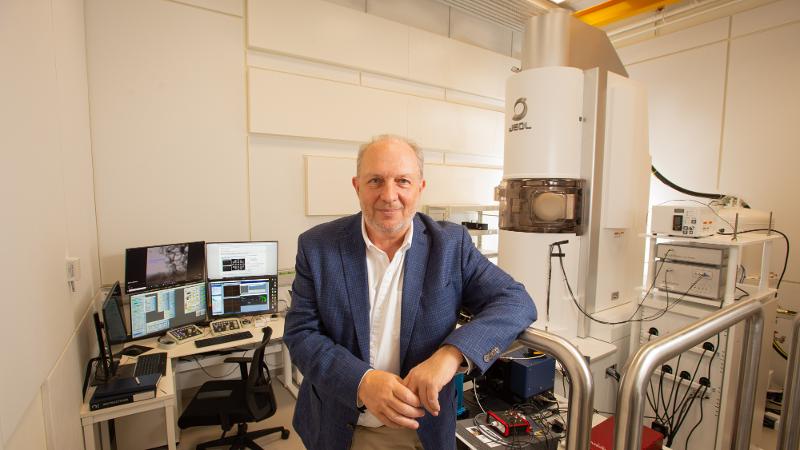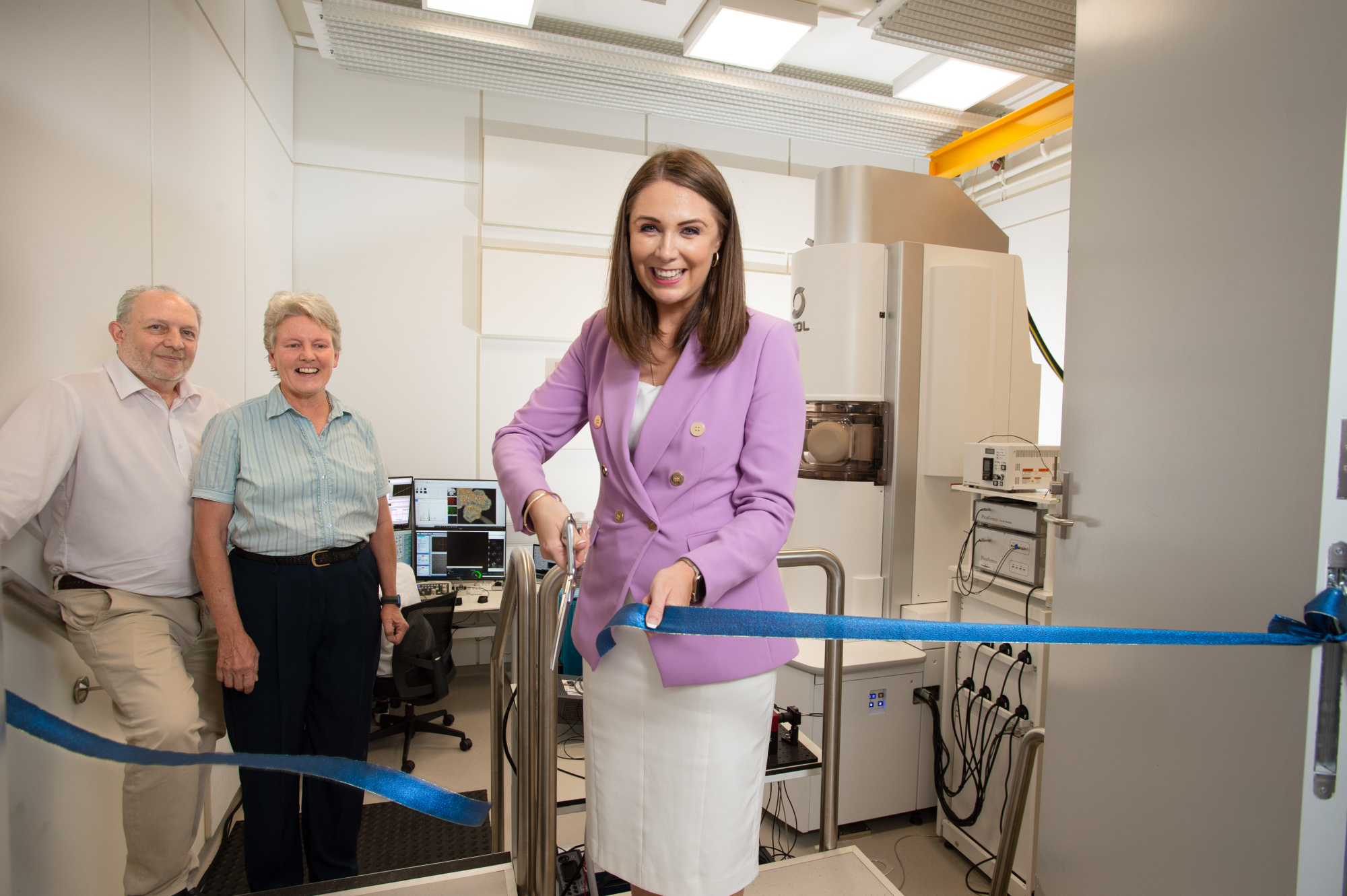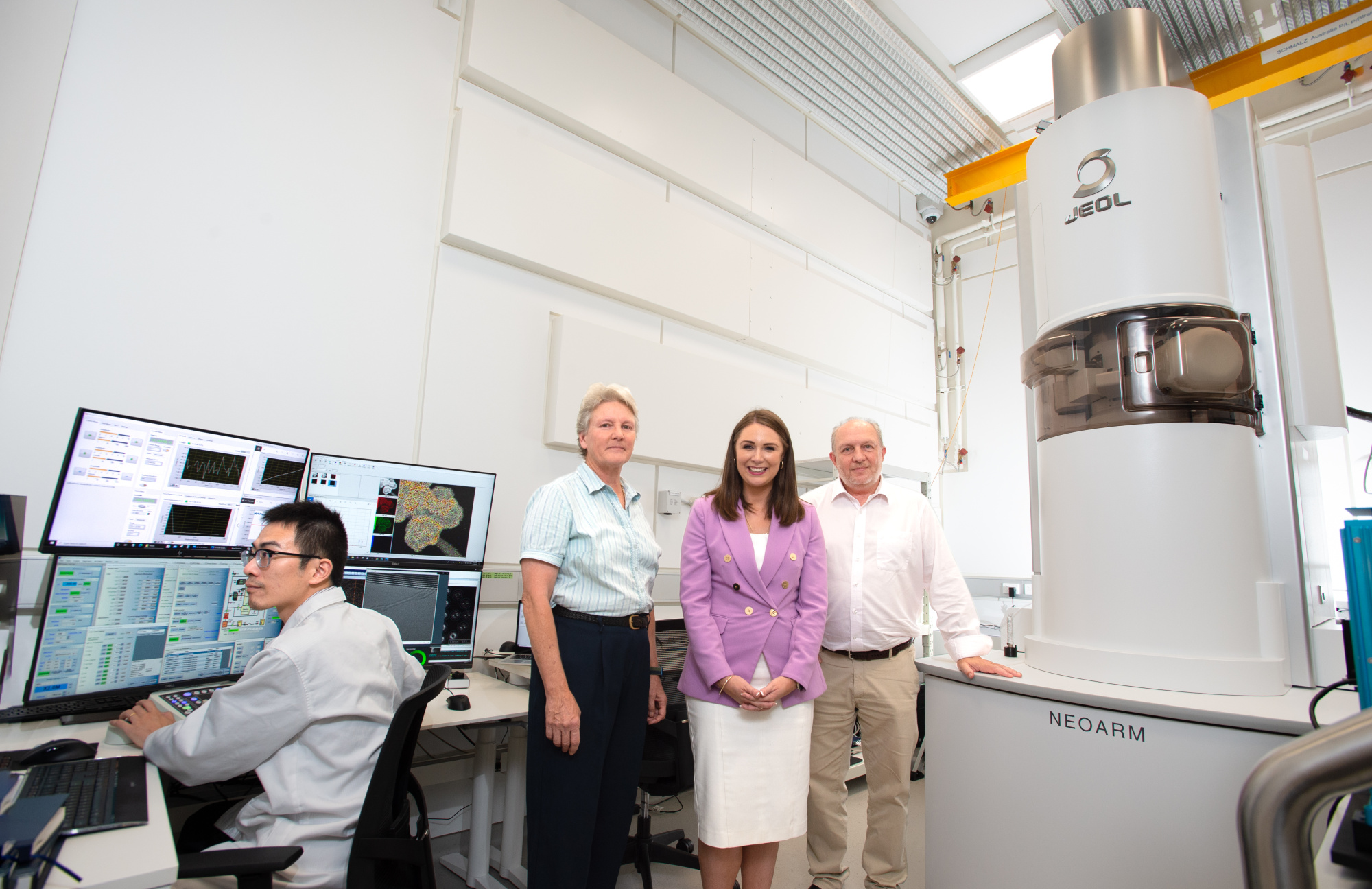
A super-resolution electron microscope that allows Australian scientists to observe and manipulate individual atoms is now operational at QUT.
The NeoARM Atomic Resolution Transmission Electron Microscope, which has been constructed over the past year in a specially designed vibration-proof room, allows scientists to create any environment they want, from the vacuum of space to the heat of a desert. It can be used to build devices so small that hundreds of thousands of them would fit on a pin head.
Queensland Minister for Science Meaghan Scanlon opened the research lab containing the state-of-the-art high-resolution transmission electron microscope, which allows scientists to view real-time processes at an atomic scale.
“The breadth and depth of Queensland research is truly world-class and is contributing to innovation across all industry sectors,” Minister Scanlon said.
“I am excited to see what our talented researchers discover with this ground-breaking microscope and the many positive benefits it will provide for Queenslanders.
“The Palaszczuk Government is committed to supporting the tremendous work done by our scientists who are inspiring increased participation in STEM subjects and the next generation of scientists.”

The NeoARM at QUT is the first microscope of its type in Australia. Installation of the microscope, manufactured by JEOL, began in September 2020, with the construction of the room-sized microscope impacted by COVID-19-related delays in getting parts shipped from Japan.
Australian Research Council Laureate Fellow Professor Dmitri Golberg, co-director of the QUT Centre for Materials Science, said the NeoARM would help advance understanding in materials science, physics, polymer science and bioengineering.
“An electron microscope allows researchers to clearly see things that happen to individual atoms – a concept that still fascinates and excites me,” Professor Golberg said.
“The power and capabilities of the NeoARM microscope at QUT will enable researchers to go to that next level in research.
“For example, when looking at materials for ultra-efficient electrodes of the future, I can see, and even video record of, how ions insert themselves into materials.
“We can also use the NeoARM to find the champion materials in each category of green energy technologies– thermoconducting, thermoelectric, structural, battery and solar materials – by undertaking deep analysis of all possible candidates in real-life harsh environments.”

ARC Laureate Fellow Professor Christopher Barner-Kowollik said the addition of the microscope to the research facilities at QUT would enable new fundamental, curiosity driven research.
“This allows us to physically see what is happening at the molecular level, and by further building our fundamental understanding at the core of the natural sciences, researchers can realise solutions to real-world problems,” Professor Barner-Kowollik said.
The NeoARM cost almost $4.7 million with $2.7 million funded through the Australian Research Council Linkage scheme, $1.5 million from the Strategic Major Equipment Program, and $500,000 comprised of $100,000 contributions from The University of Sydney, The University of Queensland, Griffith University, Australian National University and the University of New South Wales.
Media contact:
Rod Chester, QUT Media, 07 3138 9449, rod.chester@qut.edu.au
After hours: 0407 585 901, media@qut.edu.au




